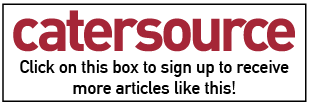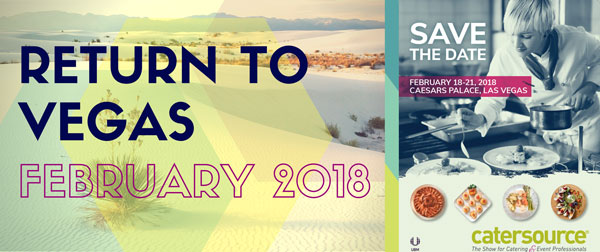Scene: Michael Scott, Manager of Dunder-Mifflin, a fictional paper company from the hit TV series The Office, is giving a talk to a classroom of business students.
Question from a student: “How does an independent paper company such as yours adjust its business model to compete in an increasingly paperless world?”
Michael Scott: “Computers are great for playing games and forwarding funny emails, but real business is done on paper. Now I want everyone to write that down.”
Camera Pans to Lecture Hall: About ninety-five of the one hundred or so students are “writing it down,” by pounding away at the keyboards of their laptops.
* * * * *

Despite the realities of an increasingly paperless world, you still need hard files. Do you ever dream of opening a drawer and effortlessly flipping to whatever you need in seconds? Let’s turn those dreams into reality. (If you do go “all digital,” you still need a system to set those files up.) These are some suggested strategies.
1) If you don’t have file cabinets, get some. Although you may have some of this information digitally stored, chances are you have hardcopies of documents such as:
• Bank statements
• Vendors
• Customers
• Employees
• Marketing
• Recipes
• Menus
• SOPs (Standard Operating Procedures)
• Instructions & warranties
• Ideas for the future
Keep a separate filing space for your personal life.
2) Get plenty of hanging files, manila/polypropylene folders, and a label maker. Heavy-duty polypropylene folders will not tear and are water repellent. They will cost a little more, but last forever.
3) Decide on a system of categorization and labeling. Not sure how to begin? Start by organizing your paperwork into different stacks on your desk. First create “major categories” such as Bank Statements, Produce Bills, and Landlord Information. A pattern will emerge.
4) Subcategorize.
Examples:
Bank statements become separate piles such as Checking Account, Savings Account, and Commercial Loan.
5) Label the folders specifically / individually.
Examples:
VENDORS: Instead of: Beverage Vendors; Label: Coca–Cola
CUSTOMERS: Instead of: A–C & D–F; Label: Widget Investments
EMPLOYEES:Instead of: Delivery Staff; Label: Davis, Sue
PROMOTIONS: Instead of: Lunch Promotion; Label: Free Box Lunch
RECIPES: Instead of: Hot Entrees; Label: Hot Breakfast Entrees
MENUS: Instead of: Seasonal Specials;Label: Summer Specials
SOPs: Instead of: Platters; Label: Assorted Sandwiches (Platter)
INSTRUCTIONS AND WARRANTIES: Instead of: Instructions for Office Supplies; Label: Instructions for Scanner
IDEAS FOR THE FUTURE: Instead of: Ideas; Label: Idea to reduce labor cost
6) Establish Action Files. Examples: Articles to Read, Topics for Next Staff Meeting, Office Supplies Needed
7) When a new category emerges, create a new file for it—immediately. Keep a handful of hanging files and folders in the back of one of the drawers.
8) MISCELLANEOUS is not a category. Bid this folder farewell. Otherwise, you end up with an overflowing “Misc” file.
9) Put new documents in the front of the folder, not the back. If this feels counter-intuitive, force yourself (and everyone else) to do it like this for a while. It will feel “right” soon.
10) At the end of the calendar year, only what you need to keep goes into storage boxes labeled by the calendar year.
Hint: You can probably get rid of at least 50% of your paperwork.
Check with your accountant about how long to retain financial records.
* * * * *
Pretend you’re in the kitchen… CLEAN AS YOU GO
The key to successfully dealing with your paperwork is to keep up with it. If you are starting with one big mess, the first thing to do is to sift through it and decide what to keep and what to throw away.
1) Purge: Throw away, shred, and recycle all junk mail, catalogs, and out-of-date information. Be aggressive. When in doubt, throw it out.
2) Open all mail: Trash all advertising inserts. If you pay your bills online, discard all payment envelopes. Shred loan offers and checks from credit card companies immediately. Don’t even look at them.
3) Sort in piles (or storage bins if necessary): Examples: Bills / Bank Statements / Correspondence
4) Take immediate action one item at a time. Starting with one pile, resolve what to do with every single piece of paper in front of you. Do not postpone these decisions.
5) Do it. Chances are you will either have to Pay it, File it, Record it, Respond to it, Sign it, or Scan it. Do not create a new pile for any of it.
6) Implement this system – daily. Have an “IN BOX” on your desk for new arrivals.
7) Create a “To-Shred” box. Appropriate paperwork should be added daily.
8) Organize your passwords and usernames. Use a software program such as One Password and /or keep a hard copy safely filed.
9) Vendor List. Keep ALL of your vendors listed by name of company. Include phone number, contact person, account number, ordering information. Add to it as needed and post it so that it is accessible to your staff.
10) Straighten up at the end of the day. This should only take few minutes. Get rid of what you can and tidy up what is left. Once a week, wipe down your desk, monitors, and keyboards.
Remember: Being organized means being able to find what you need, when you need it!
 Michael Rosman is the owner of, www.TheCorporateCaterer.com, a consulting company that offers catering lead generation. You can reach him at [email protected].
Michael Rosman is the owner of, www.TheCorporateCaterer.com, a consulting company that offers catering lead generation. You can reach him at [email protected].





